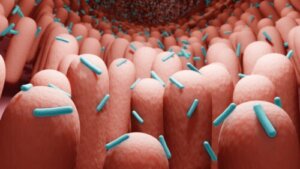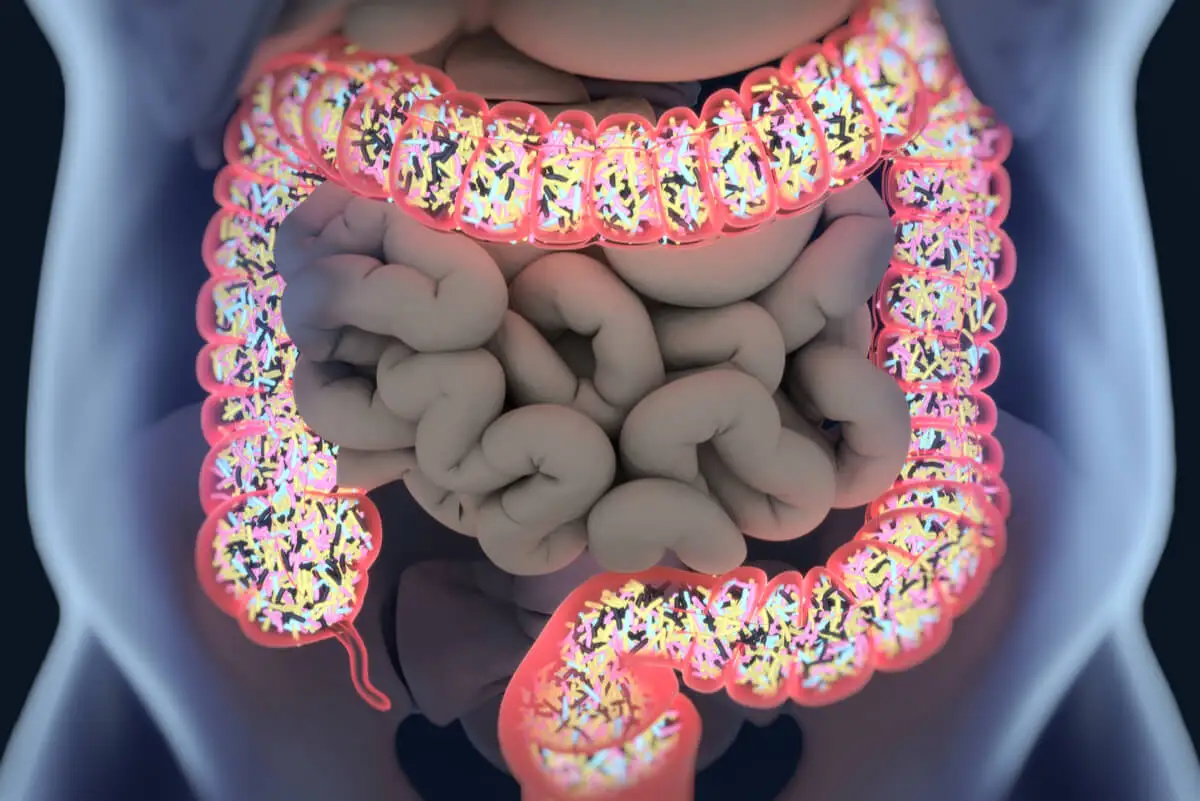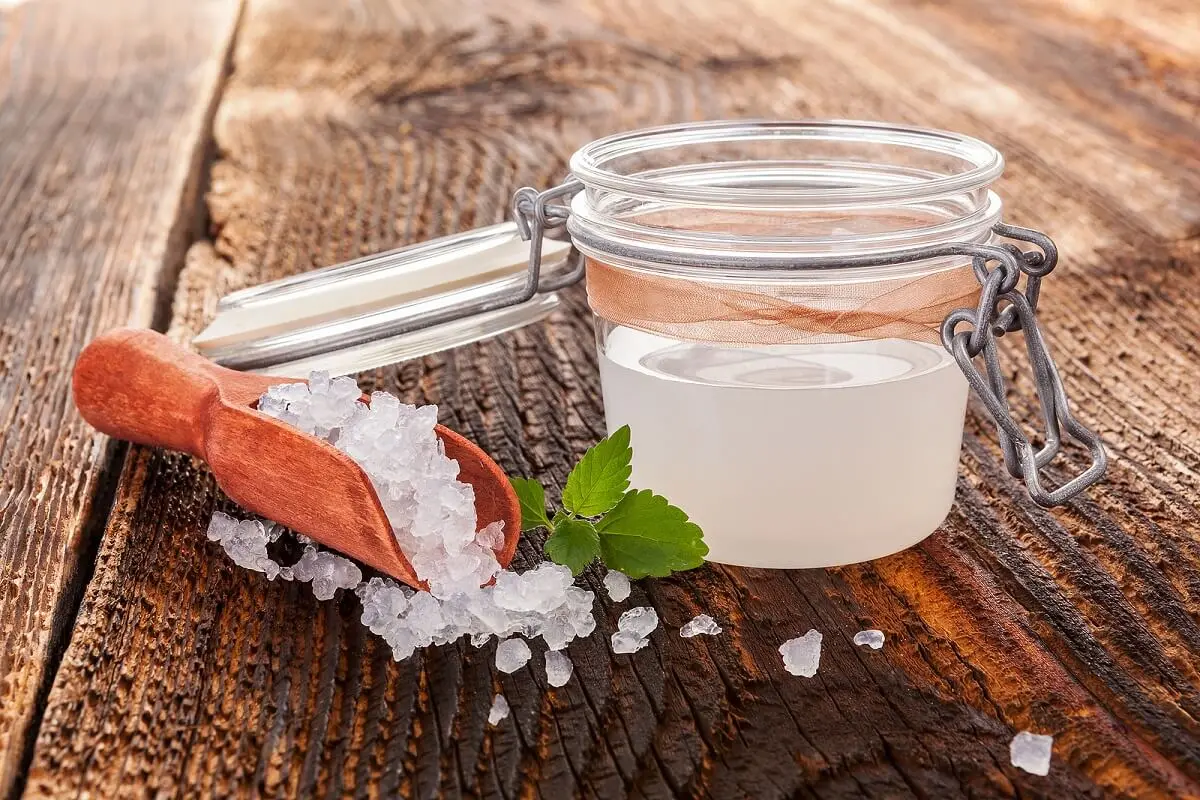Postbiotics: What They Are and How to Get Them


Written and verified by the nutritionist Maria Patricia Pinero Corredor
Science is dynamic and changing. One discovery never ends there, as it always leads to another. Such is the case of postbiotics, which refer to non-living cellular components or active substances obtained from probiotics during their growth in the intestine.
The concepts that we know so far are probiotics (live microorganisms beneficial to health), prebiotics (substrates that stimulate the growth of these bacteria), and synbiotics (the union of the above in the same food). Postbiotics now come into play.
Although research on them is just beginning and some aspects are not very clear, we will show you updated information on their relationship with pro- and prebiotics in this article.
We think you may be interested in reading this, too: 6 Natural Antibiotics that You Probably Didn’t Know About
What are postbiotics?
In 2019, a panel of experts defined postbiotics as a preparation of inanimate microorganisms or their components that confer a health benefit to their host.
The definition also considers that postbiotics must contain inactive microbial cells or components that benefit our health, with or without metabolites synthesized by the bacteria. In other words, dead cells or their fragments, such as probiotics, are obtained from a living cell.
This concept will be of great use for future activity in this area by scientists, industries, researchers, regulators, and consumers.
The components of postbiotics
Postbiotics are made up of the following:
- Non-living microbial cells .
- Structures or fragments of microbial cells: This includes cell walls, membranes, exopolysaccharides, proteins attached to cell walls
- Metabolites or end products: This includes peptides, organic acids, enzymes, bacteriocins, and secreted proteins

How do they relate to probiotics, prebiotics, and synbiotics?
If we were to link these concepts, we would start with prebiotics, as they’re all those nutrients or substrates (such as fructooligosaccharides) that nourish probiotics. This type of nutrients allows the maintenance and growth of healthy bacteria so that they can produce postbiotics through a group of enzymes,
Symbiotics are a mixture of live microorganisms (probiotics) and substrate (prebiotic). Thus, they benefit the host.
Some postbiotics are peptides, a kind of very small proteins. Also, there are short-chain fatty acids or SCFA and lactic acid. These can prevent the growth of harmful bacteria or promote the proliferation of beneficial bacteria.
Like this article? You may also like to read: 10 Natural Antibiotics that Don’t Require a Prescription
What are their health benefits?
As a new concept, there are still some gaps about its mechanism of action to promote the good health status of the host. However, what we already know is encouraging. Let’s take a look.
Possible prevention or treatment of COVID-19
A recent review from 2022 analyzed 84 studies since the beginning of the pandemic. There they report that postbiotics, along with pro- and prebiotics, may promote communication between the gut microbiota and the immune system. Therefore, they’re being considered as adjuvants in the prevention, treatment, and modulation of internal bacterial expression in patients with COVID-19.
They help maintain the intestinal barrier
Postbiotics are thought to aid in the maintenance of the intestinal barrier. They may also reduce inflammation and help fight infections of the digestive system.
In addition, they could be used to treat allergies and chronic nutritional diseases, such as obesity. They may also regulate blood sugar, improving control in diabetic patients.
They can treat digestive infections
Helicobacter pylori may cause some ulcers. It turns out that postbiotics are able to eradicate it.
In addition, they have been shown to control the symptoms of irritable bowel syndrome, including reducing abdominal pain and discomfort. Altered bowel habits and inflammation can also be improved.
Other benefits, such as improving sleep quality or curing respiratory tract infections, deserve further study for conclusive results. However, trials so far have been favorable.
Overall, although research on postbiotics is well underway, researchers are still cautious.
How are postbiotics made?
To obtain postbiotics , it’s necessary to encourage the development of probiotics that leave part of their cells or produce certain compounds. For this, the appropriate substrates (prebiotics) for such growth must be maintained.
So where are these prebiotics found? In garlic, onions, asparagus, and bananas, above all.
These food sources contain a type of fiber, fructooligosaccharides, which nourish beneficial intestinal bacteria. They’re also found in chicory root, Jerusalem artichokes, barley, oats, apples, legumes, seaweed, nuts and leeks.
To supplement the equation and not be left alone with your natural microbiota, you can consume some probiotics in foods or as supplements. Unpasteurized fermented foods such as kefir, miso, and kombucha are good sources of beneficial bacteria, especially of the lactobacillus type.
When selecting fermented foods, make sure they’re seeded with microorganisms with proven benefits. These have to be alive, well defined, and characterized.
Prebiotic foods can stimulate probiotics and, with them, generate postbiotics. However, if you prefer postbiotic supplements, be aware that this concept is new in the field of healthy microorganisms, and there is still a lot of research to be done.
There are products that claim to promote digestive health and immune function, but there’s still not enough evidence to prove it. Therefore, it’s important to be careful when buying them.

There’s still a long way to go
A balanced and varied diet, including foods that are sources of prebiotics and probiotics, can ensure good development of beneficial bacteria in the intestines. Consequently, the production of postbiotics would be favorable, and the development of certain diseases can be avoided.
If necessary, consult your doctor about which postbiotic supplement you could use, the dosage, and the time of use. It’s also important to know about their possible interactions with any medications you’re taking.
All cited sources were thoroughly reviewed by our team to ensure their quality, reliability, currency, and validity. The bibliography of this article was considered reliable and of academic or scientific accuracy.
- Salminen, S., Collado, M. C., Endo, A., Hill, C., Lebeer, S., Quigley, E., Sanders, M. E., Shamir, R., Swann, J. R., Szajewska, H., & Vinderola, G. (2021). The International Scientific Association of Probiotics and Prebiotics (ISAPP) consensus statement on the definition and scope of postbiotics. Nature reviews. Gastroenterology & hepatology, 18(9), 649–667. https://doi.org/10.1038/s41575-021-00440-6
- Swanson KS, et al. Documento de consenso de expertos: Declaración de consenso de la Asociación Científica Internacional de Probióticos y Prebióticos (ISAPP) sobre la definición y el alcance de los simbióticos. Nat. Rev. Gastroenterol. Hepatol. 2020; 17 :687–701.
- Marco ML, et al. Health benefits of fermented foods: microbiota and beyond. Curr. Opin. Biotechnol. 2017;44:94–102. Disponible en: https://www.ncbi.nlm.nih.gov/pubmed/27998788
- Xavier-Santos, D., Padilha, M., Fabiano, G. A., Vinderola, G., Gomes Cruz, A., Sivieri, K., & Costa Antunes, A. E. (2022). Evidences and perspectives of the use of probiotics, prebiotics, synbiotics, and postbiotics as adjuvants for prevention and treatment of COVID-19: A bibliometric analysis and systematic review. Trends in food science & technology, 120, 174–192. https://doi.org/10.1016/j.tifs.2021.12.033
- Viola Andresen, Jürgen Gschossmann, Peter. Layer. Heat-inactivated Bifidobacterium bifidum MIMBb75 (SYN-HI-001) in the treatment of irritable bowel syndrome: a multicentre, randomised, double-blind, placebo-controlled clinical trial. 2020, VOLUME 5, ISSUE 7, P658-666, DOI:https://doi.org/10.1016/S2468-1253(20)30056-X
- Braido F, Melioli G, Candoli P, Cavalot A, Di Gioacchino M, Ferrero V, Incorvaia C, Mereu C, Ridolo E, Rolla G, Rossi O, Savi E, Tubino L, Reggiardo G, Baiardini I, di Marco E, Rinaldi G, Canonica GW; Lantigen Study Group, Accorsi C, Bossilino C, Bonzano L, DiLizia M, Fedrighini B, Garelli V, Gerace V, Maniscalco S, Massaro I, Messi A, Milanese M, Peveri S, Penno A, Pizzimenti S, Pozzo T, Raie A, Regina S, Sclifò F. The bacterial lysate Lantigen B reduces the number of acute episodes in patients with recurrent infections of the respiratory tract: the results of a double blind, placebo controlled, multicenter clinical trial. Immunol Lett. 2014 Dec;162(2 Pt B):185-93. doi: 10.1016/j.imlet.2014.10.026. Epub 2014 Nov 3. PMID: 25445613; PMCID: PMC7173099.
- Nishida,D. Sawada,T. Kawai,Y. Kuwano,S. Fujiwara,K. Rokutan. Para-psychobiotic Lactobacillus gasseri CP2305 ameliorates stress-related symptoms and sleep quality. Journal of Applied Microbiology. Volume123, Issue6, December 2017, Pages 1561-1570. https://doi.org/10.1111/jam.13594
This text is provided for informational purposes only and does not replace consultation with a professional. If in doubt, consult your specialist.








